 Fall is taking its sweet time showing up where I live in Granite Bay. As I currently write this, it’s late October and a way-too-hot 87 degrees outside, but my garden is loving it.
Fall is taking its sweet time showing up where I live in Granite Bay. As I currently write this, it’s late October and a way-too-hot 87 degrees outside, but my garden is loving it.
Insects and hummingbirds are everywhere, buzzing from plant to plant, storing up as much energy as they can before cold weather finally makes an appearance.
Late summer/early fall can often be a tricky time in the garden. Lots of plants are feeling like I do this time of year – just plain sick and tired of the heat, completely drained and lackluster.
And most fall and winter bloomers aren’t quite ready to jump forth and take center stage, as they’re patiently waiting for cooler temperatures to arrive.
The result can be less than exciting, with the most common color in the garden a washed-out, drab, tired shade of green. But that doesn’t have to be the case!
I’ve been in my new home now a little over 2-years, and have spent the bulk of my time remodeling my very-outdated home and even-more-outdated garden. Actually, that’s not true. It would be a compliment to say my garden was outdated. It was more like completely neglected, but that’s for another day and a different blog post.
Now that some of the plants in my garden have had a couple of seasons under their belt, they’re really kicking into gear. So today, I wanted to highlight a few of them that are hot-spots of activity right now. These plants not only add much-needed color to my garden but also serve as valuable nectar and food sources for the wildlife (but not all wildlife – the deer, rabbits, and turkeys have entirely left them alone alone.)
‘Sheffield Pink’ chrysanthemums
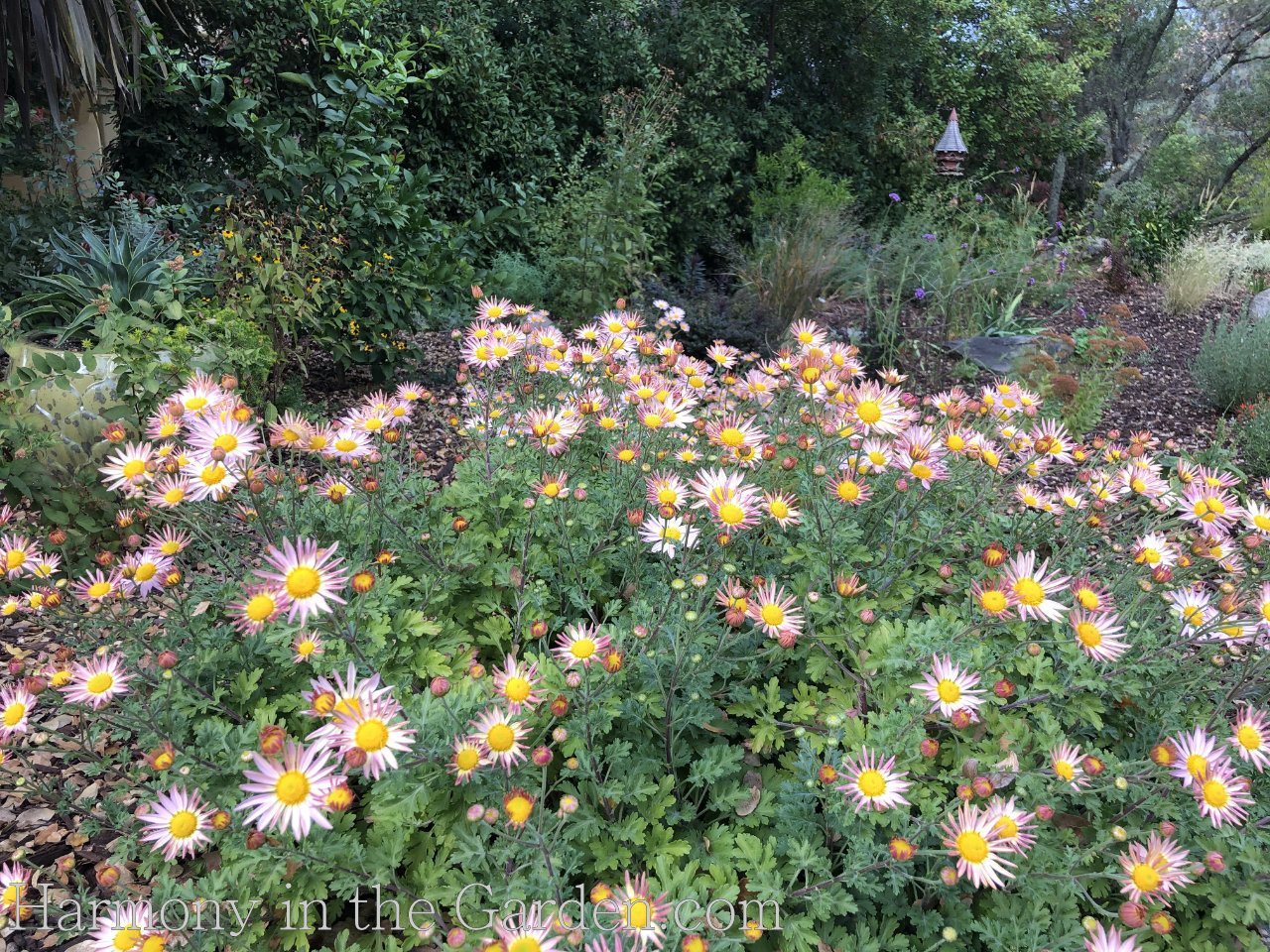
There’s one plant in particular that serves as a giant all-you-can-eat-buffet in my garden – the ‘Sheffield Pink’ chrysanthemum.
This beauty has stolen my heart, for it not only holds up to the blistering heat of our summers (taking 105 temps in stride) but is covered with zillions of the prettiest flowers in shades of apricot-pink.
I’m usually not a huge fan of pink, but somehow I have a lot of this color in my garden.
And I’m not a huge fan of chrysanthemums either (despite the photo at the top of this article, of the two unknown mums that grew in my previous garden.)
But this pink and this chrysanthemum are both amazing.
Each flower contains subtle shades of soft apricot, peach, and light pink which glow in the garden (versus ‘glare’, like a lot of other pinks do).
And just LOOK at the activity happening on just one of my three plants– it’s amazing! In fact, last week there also was a giant yellow and black garden spider in there, but I had my husband relocate it to another plant so I didn’t accidentally run into it.
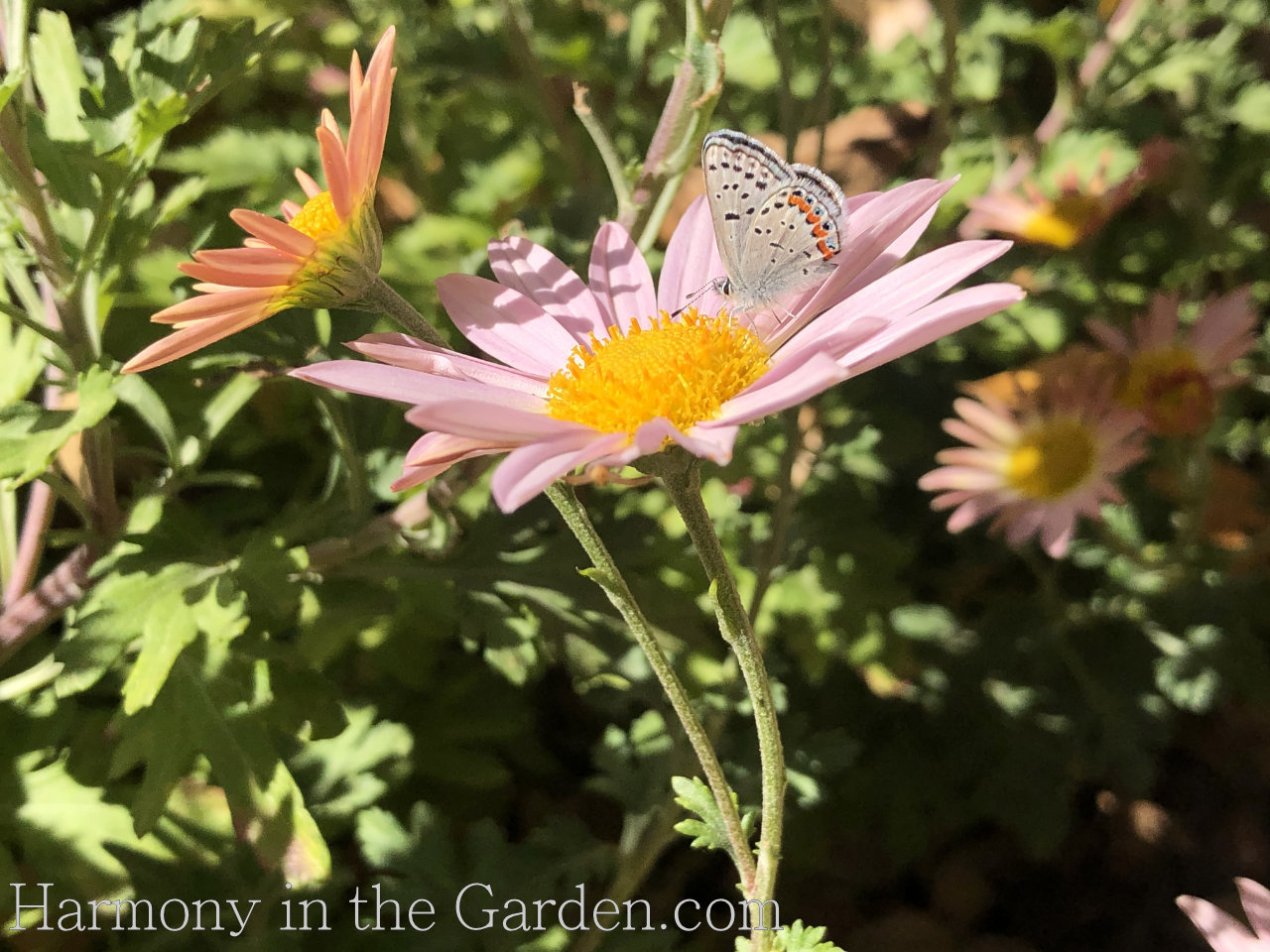
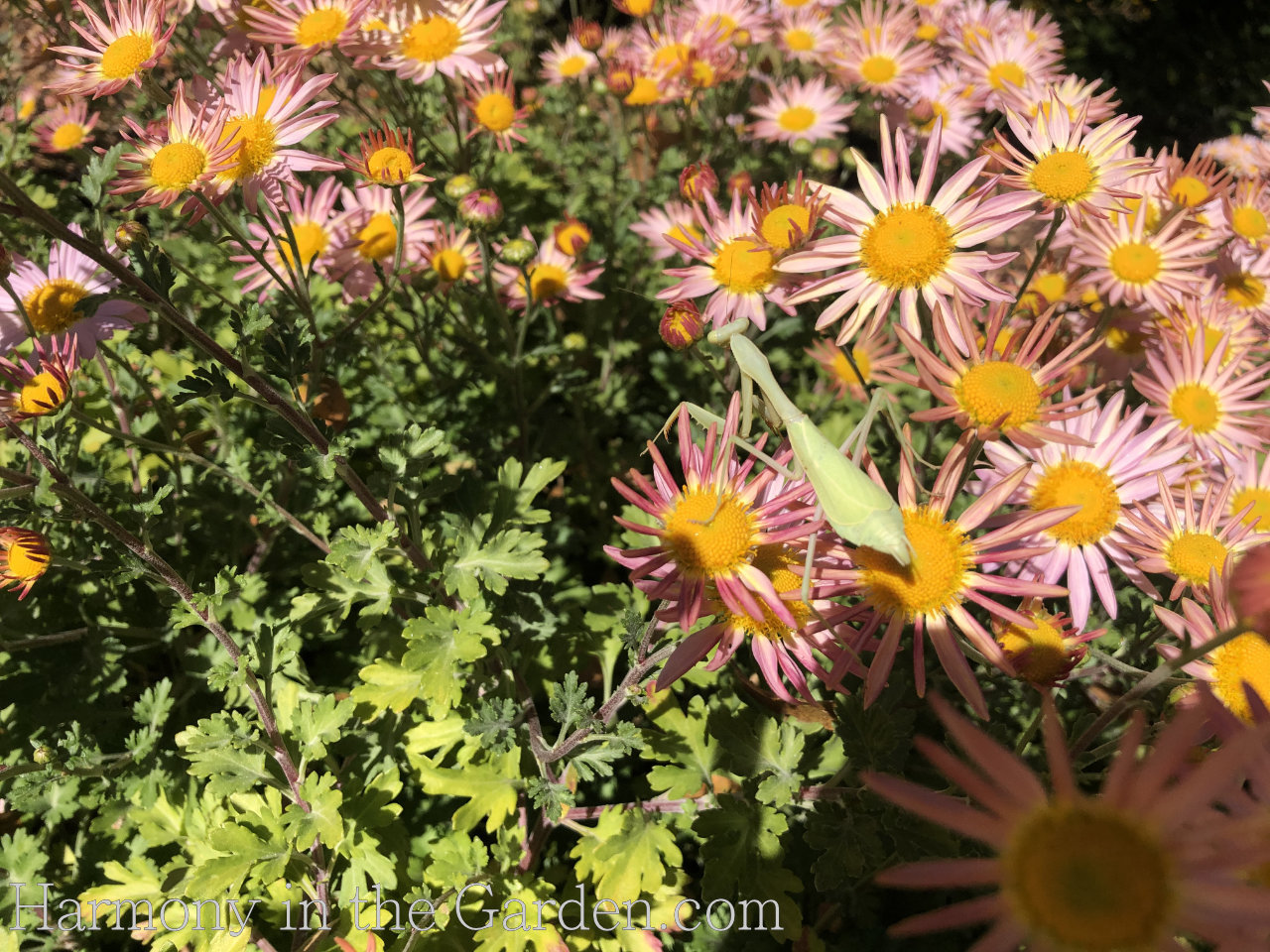
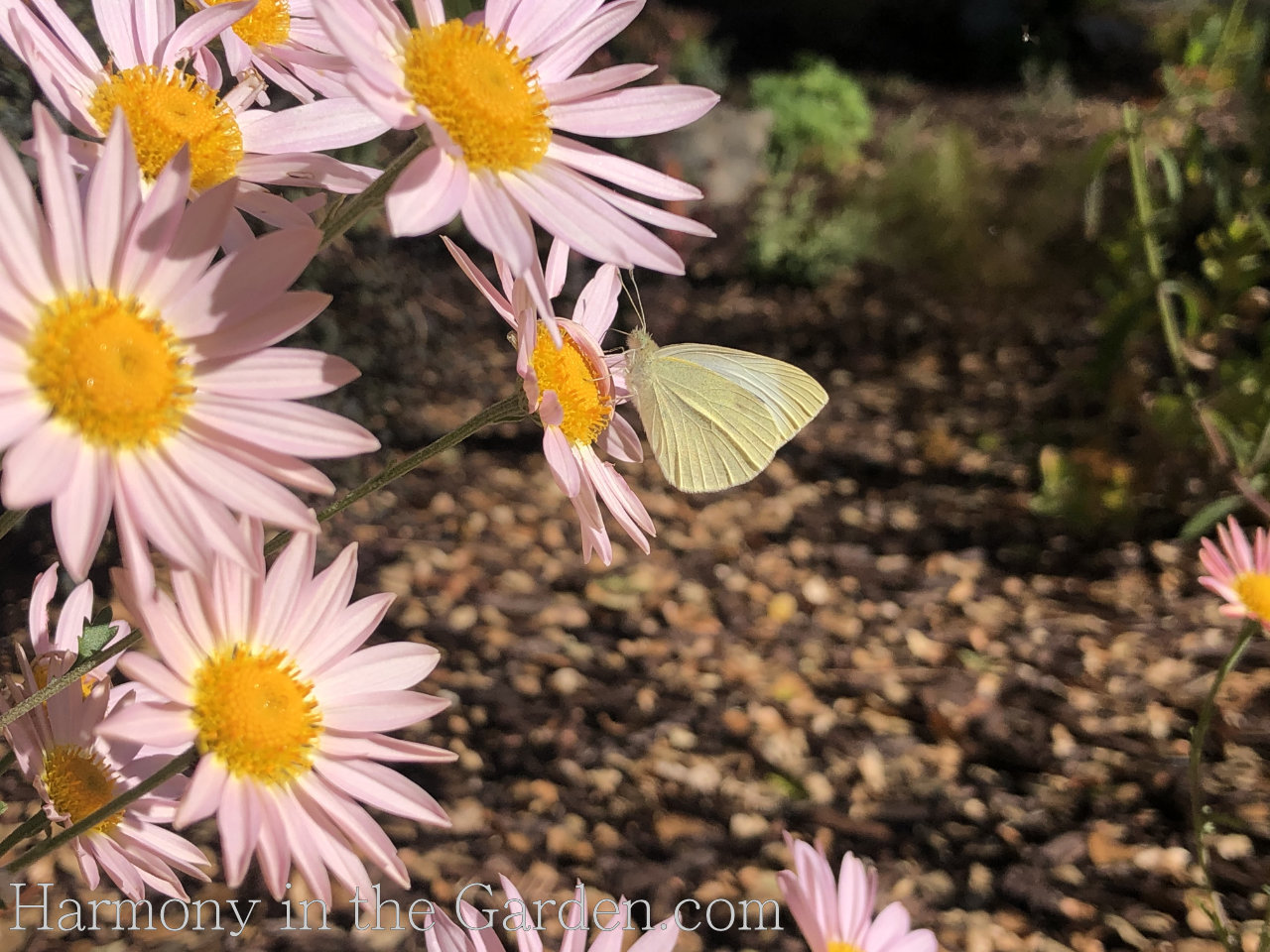
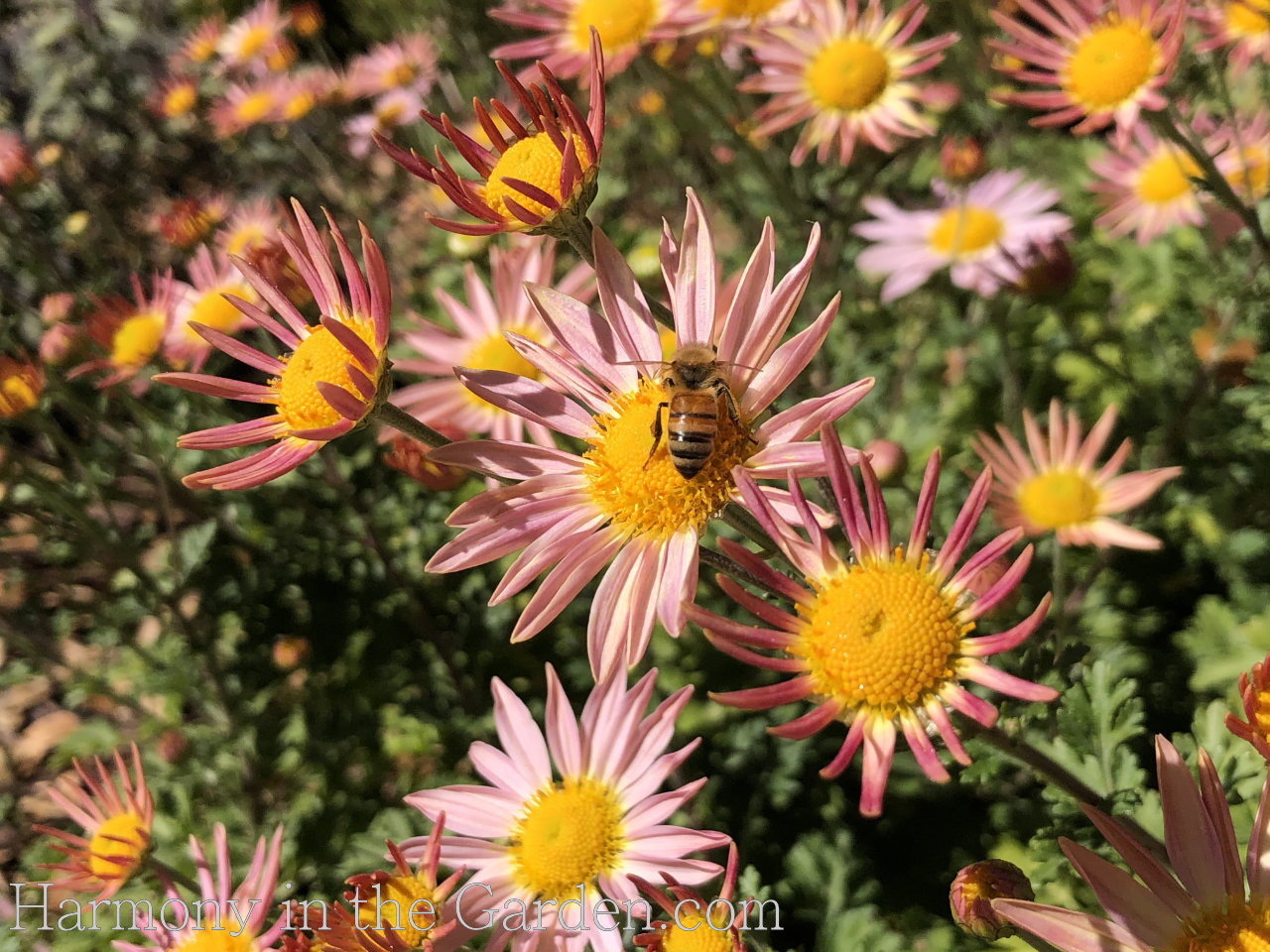
 I’ve never seen this variety available in nurseries in my area, so I ordered it from Bluestone Perennials when I first moved here.
I’ve never seen this variety available in nurseries in my area, so I ordered it from Bluestone Perennials when I first moved here.
Each of the three plants came in the tiniest little 4” pots. And now, they’re each at least 3’ wide and has been blooming for three weeks now with no signs of slowing down.
And the subtle orange colors that are in the petals perfectly blend with the other orange flowers that are in the nearby garden bed (and you know my feelings about orange!)
Helianthus angustifolius (Swamp Sunflower)

Many of the plants in my new garden were given to me by my mother, including this helianthus angustifolius (with the unfortunate nickname of Swamp Sunflower).
I suppose they might grow in a swamp (why else would they be called that, right?), but mine happily grow in my very unswamp-like garden.
Trust me, my soil is opposite of a swamp, but here they are, like a spotlight with their bright, cheery blooms.
When designing gardens for others, I always like to include as many succession-style plantings as I can.
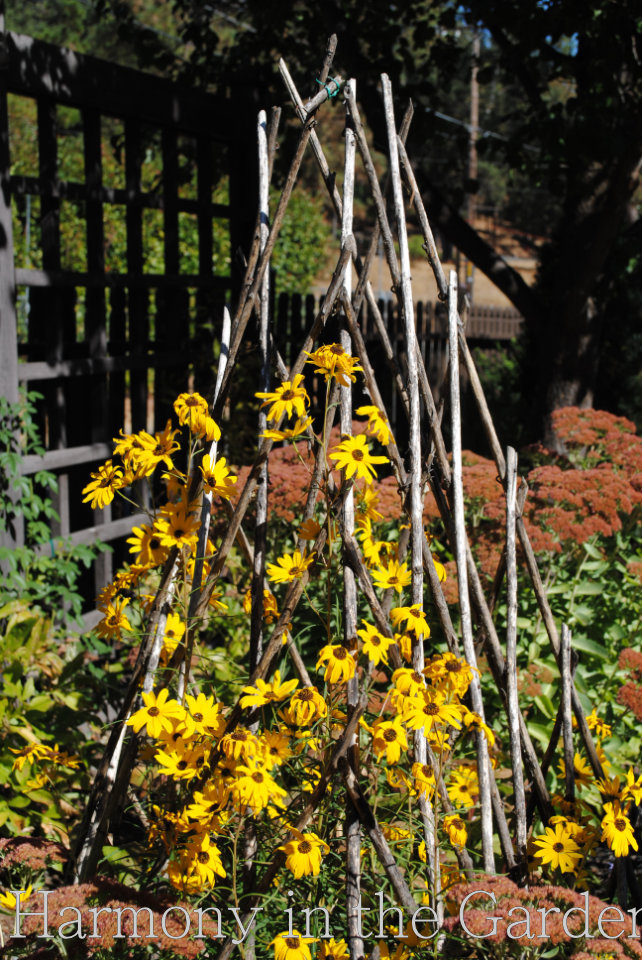
I don’t mean just making sure to plant things that bloom throughout the various seasons of the year, but to plant things side by side that have similar blooms but with different times.
That way, instead of only having 3-weeks or so of blooms, you might end up with 6 to 8-weeks (or more!) of similar blooms.
Examples of this would be planting a Pink Jasmine vine next to a Star Jasmine Vine (scroll down a bit in this article, and you can see a photo of the two jasmines).
Another favorite succession planting combo are rudbeckia triloba (below, on the left) planted near a helianthus (below, on the right), which results in a whopping 8-10 weeks of gorgeous yellow daisy-like blooms.
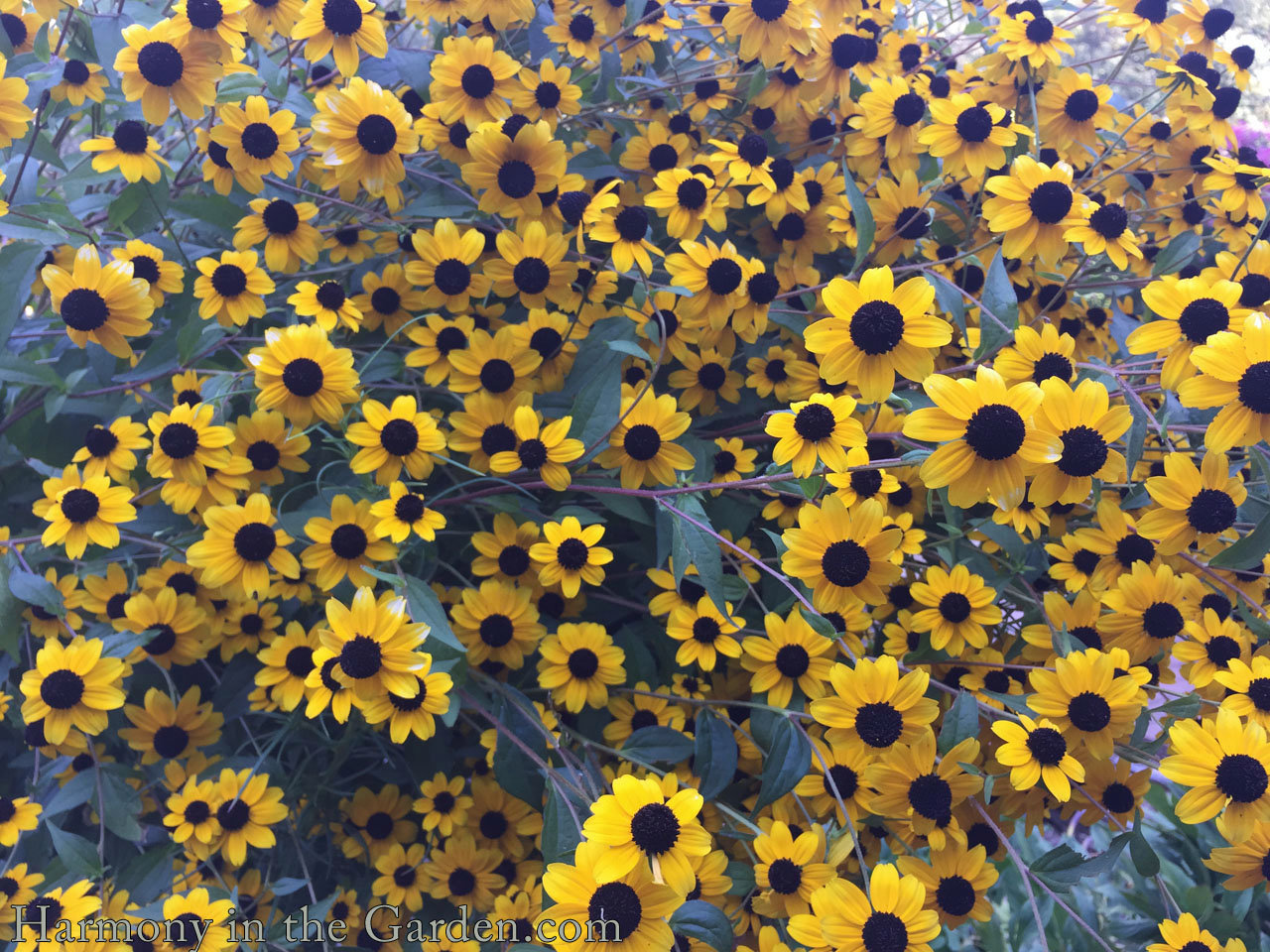
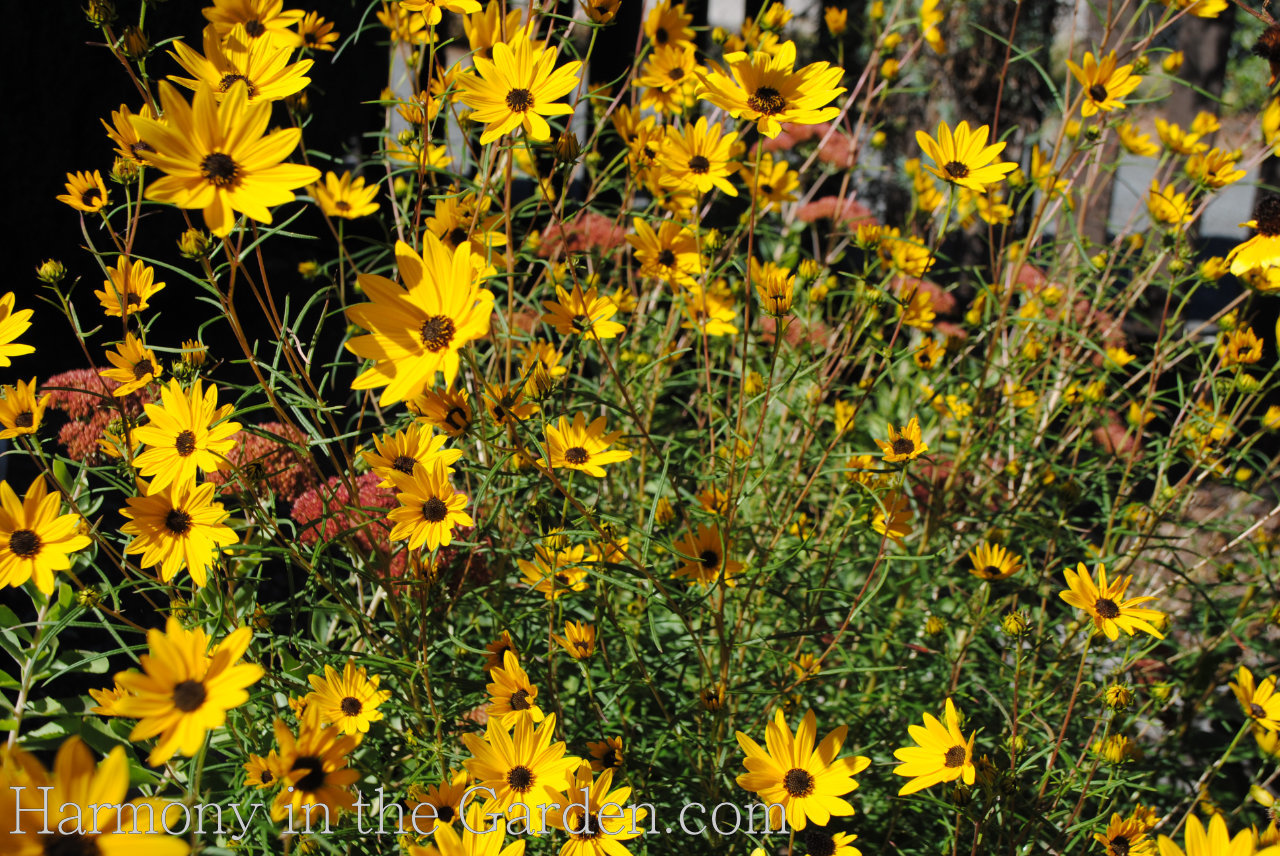
Sedum Autumn Joy
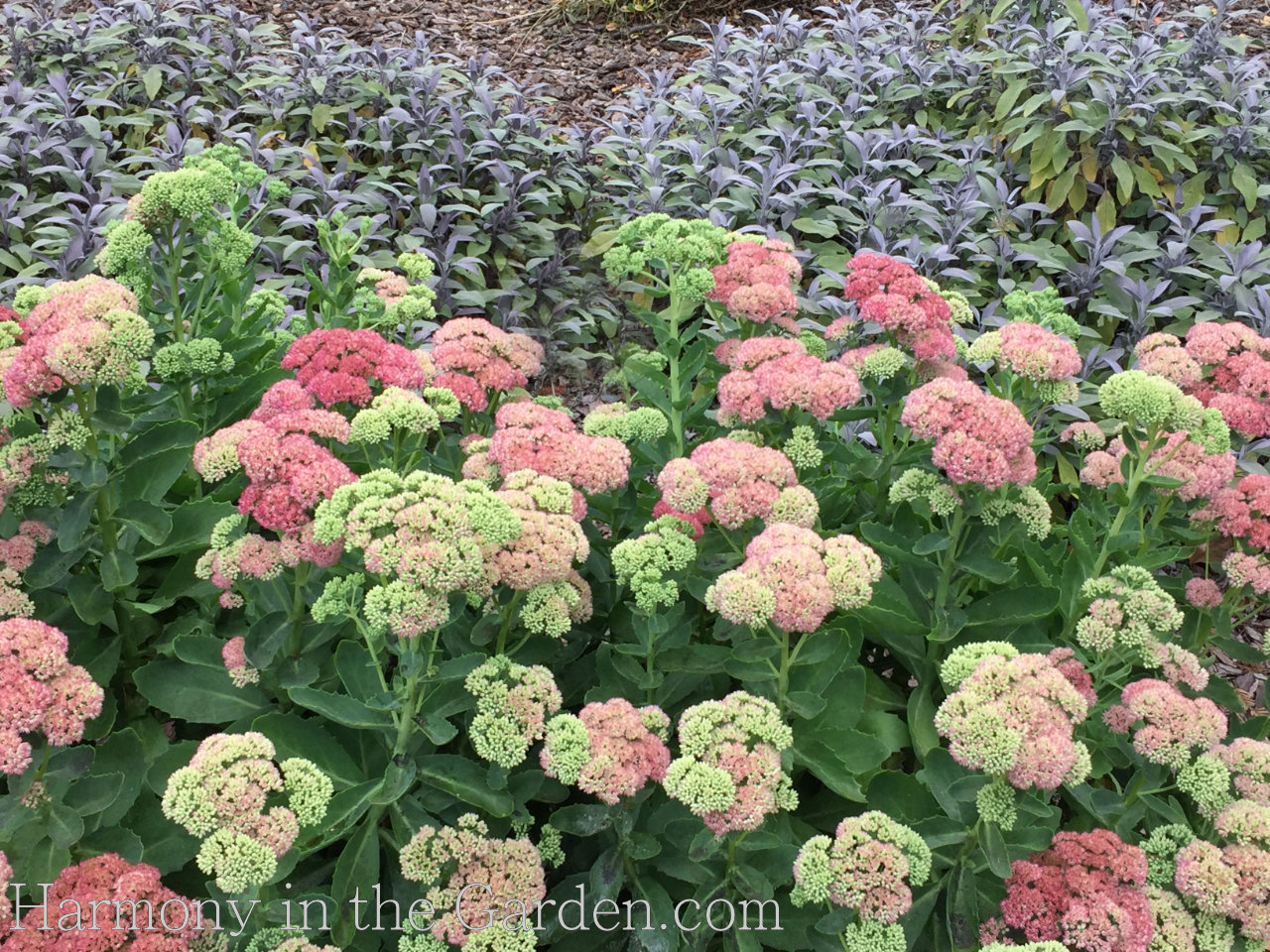
Even though this isn’t a new plant for a lot of people, it’s one of those that gardeners tend to forget about, which is a shame because it provides three seasons of beauty.
In warmer climates, it has a really short down-time, quickly leafing out once the danger of frost is gone. It rapidly grows to 2’ or more, with its broccoli-like blooms in pale shades of green that slowly turn a soft pink.
As the season progresses and temperatures increase, those pale shades of green turn into a vibrant pink (there’s that pink color in my garden again, but this one’s worth it!) Here, you can see how it’s changed over the course of just a few weeks (and there’s that wonderful rudbekia triloba planted next to it!)
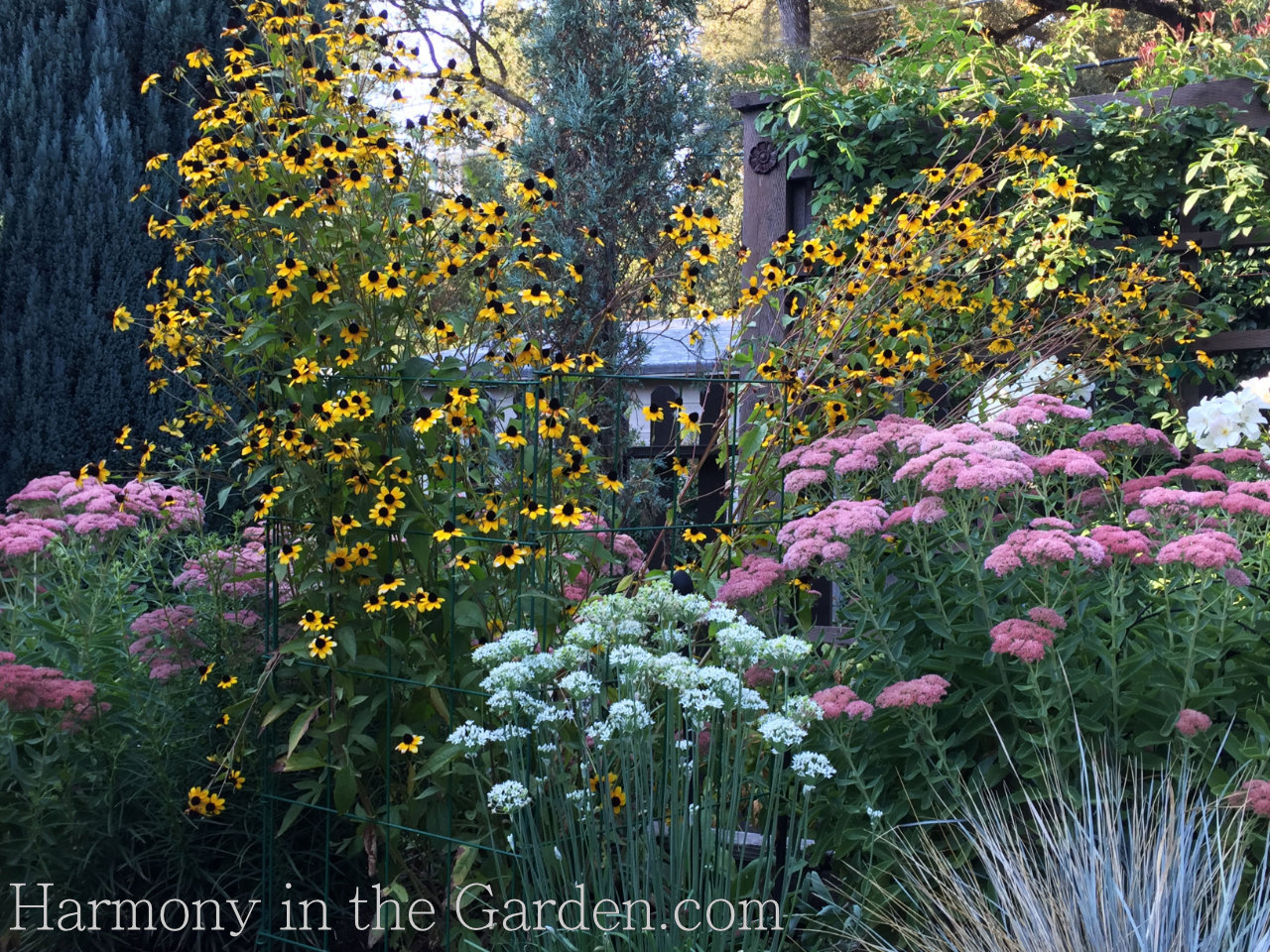
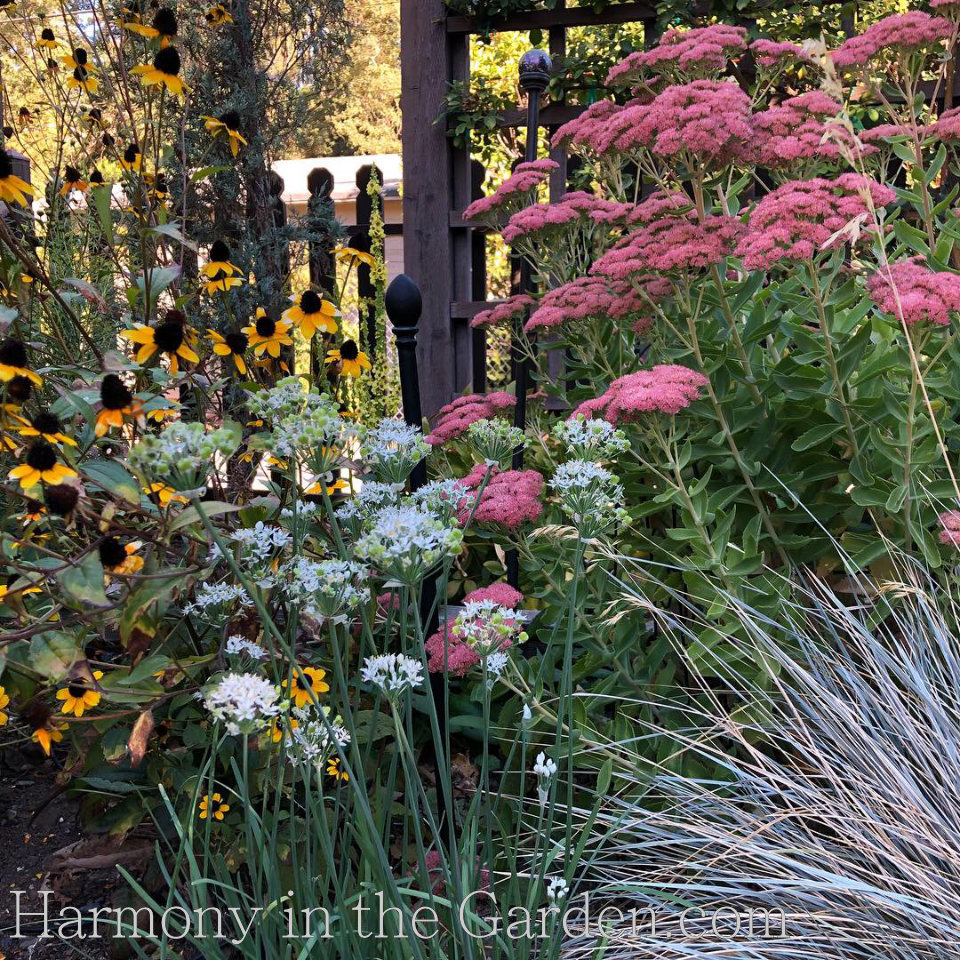
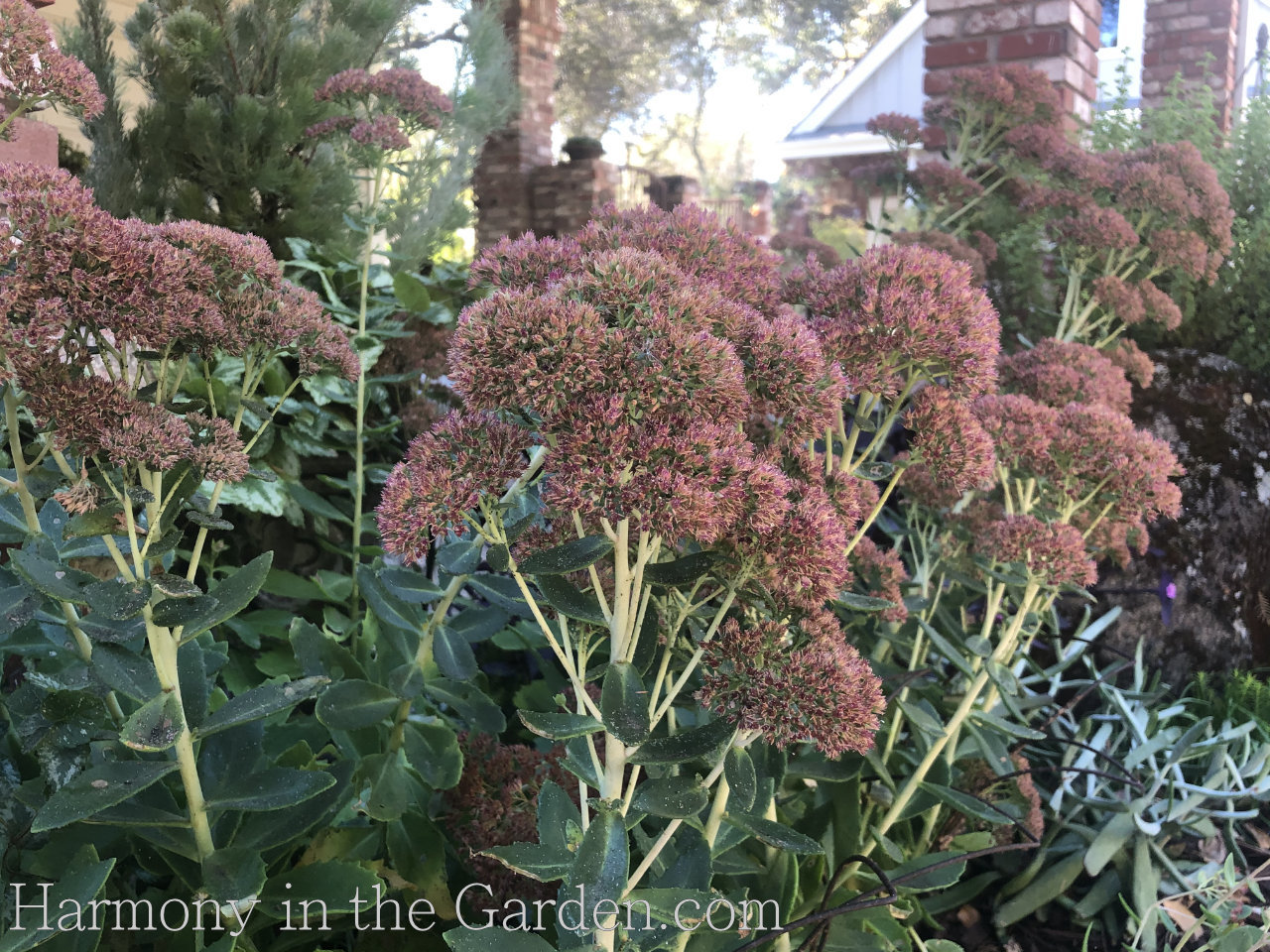
It then turns a deep, rich shade dark pink for a few weeks, until it begins to mellow out into shades of rusty brick-red.
I really do love all the colors of this flower, but I’m particularly fond of how it blends with all the brick in my new home.
It’ll stay this color for another few weeks until it begins turning shades of tan and brown.
I leave the seed-heads intact until the first winter storms batter the stems to the ground. That way, little birds can continue to feast on the seeds for as long as possible.
Salvia elegans ‘Golden Delicious’
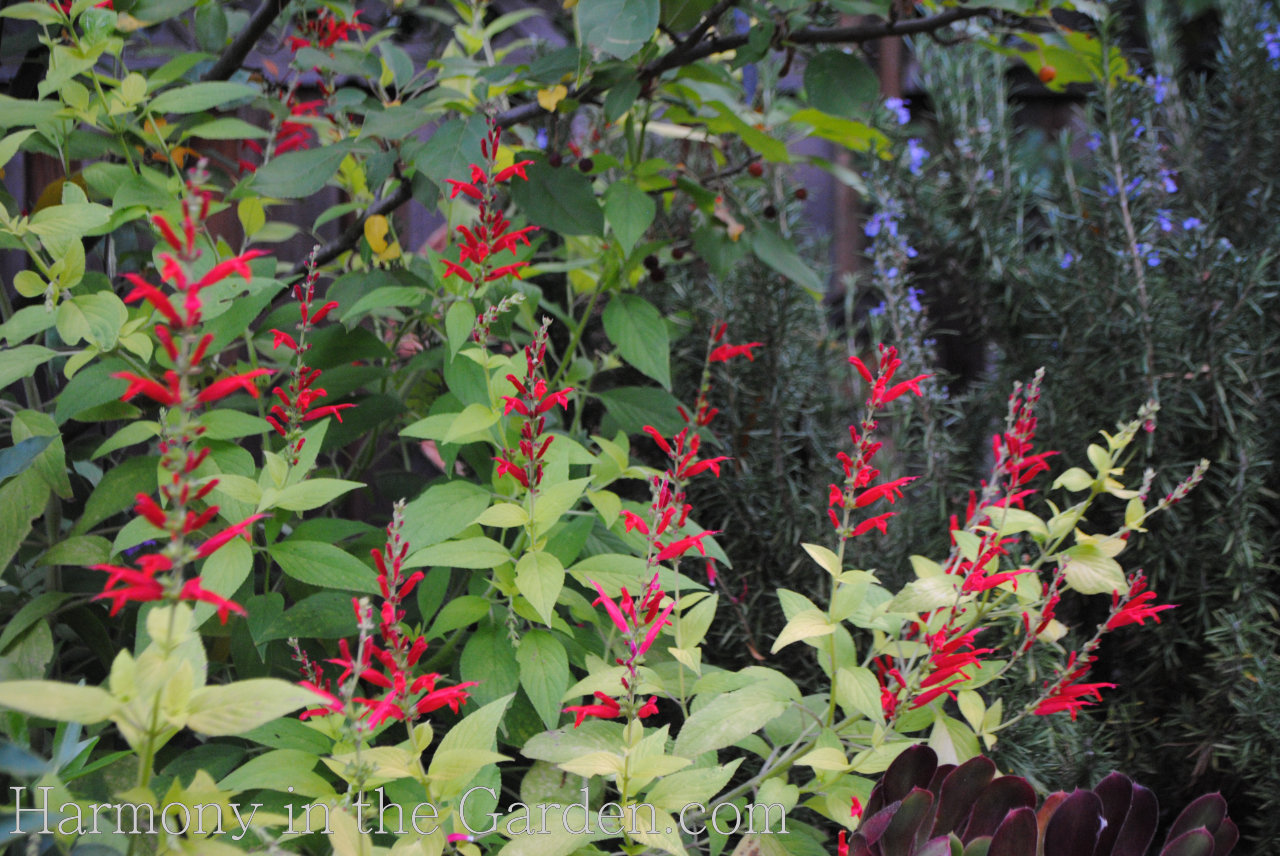 If your garden is short on color this time of year, you need to plant this Pineapple Sage!
If your garden is short on color this time of year, you need to plant this Pineapple Sage!
It quietly grows throughout the spring and summer, sitting there as an unassuming (but pretty!) 2×2 mound of chartreuse leaves with a delicious pineapple fragrance.
But starting in October – look out!
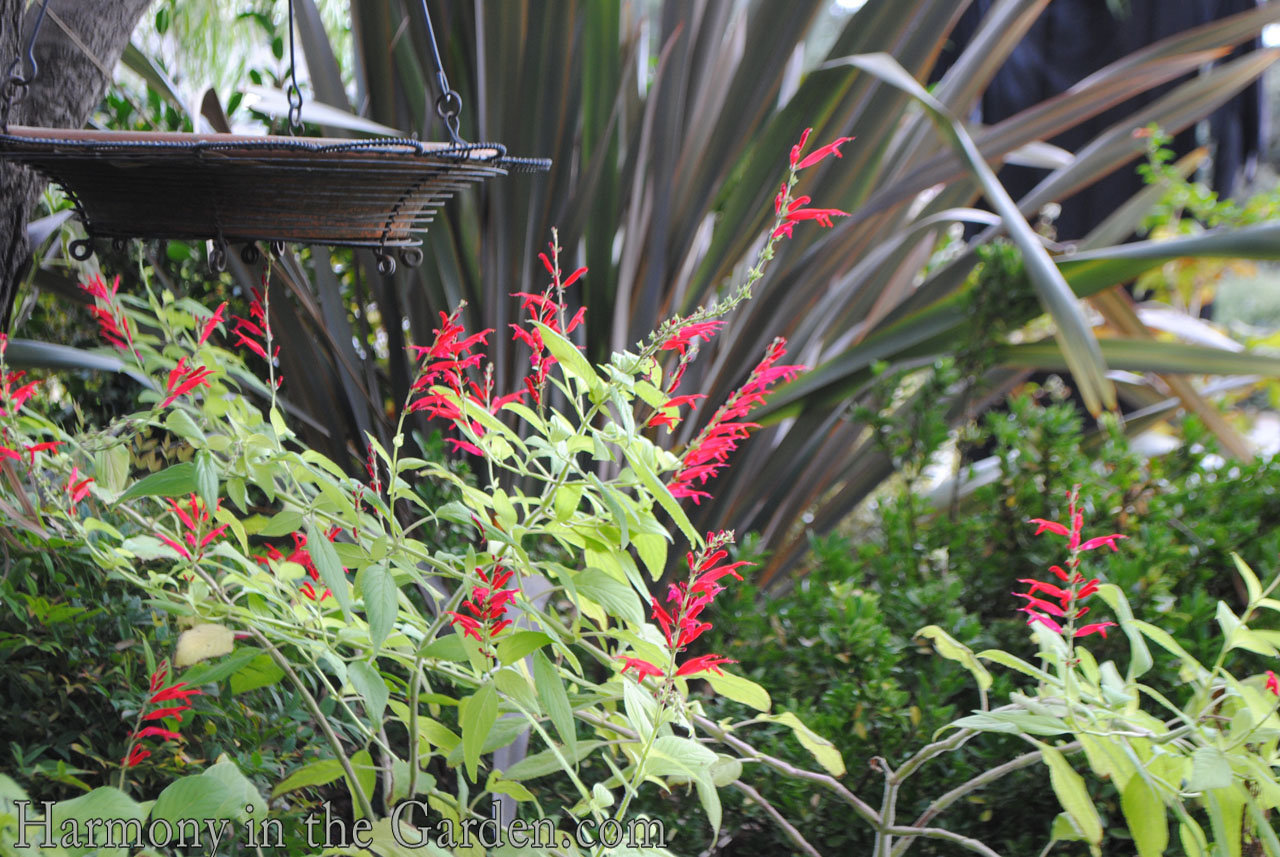
Profuse, delicate spires of crimson-red flowers tower to 4’ or so, beckoning every hummingbird in the neighborhood to stop by and take a sip.
I’ve always had a Pineapple Sage growing in my garden, as my daughter used to toddle over to the plant to nibble its leaves.
It was one of the first plants she connected with, at the tender age of 2, and between her and my rabbit (that had free-reign of my garden), they kept the poor plant pruned pretty low.
Even today, at 24, when she visits my garden in the fall, she’ll make a bee-line to my pineapple sage for a leaf or two.
As a side note, my previous garden was featured in this month’s Garden Gate magazine and it’s been wonderful to visit it again through their eyes!
This magazine has undergone a makeover and it’s really quite fantastic. If you haven’t checked it out in awhile it might be time to give it another look!
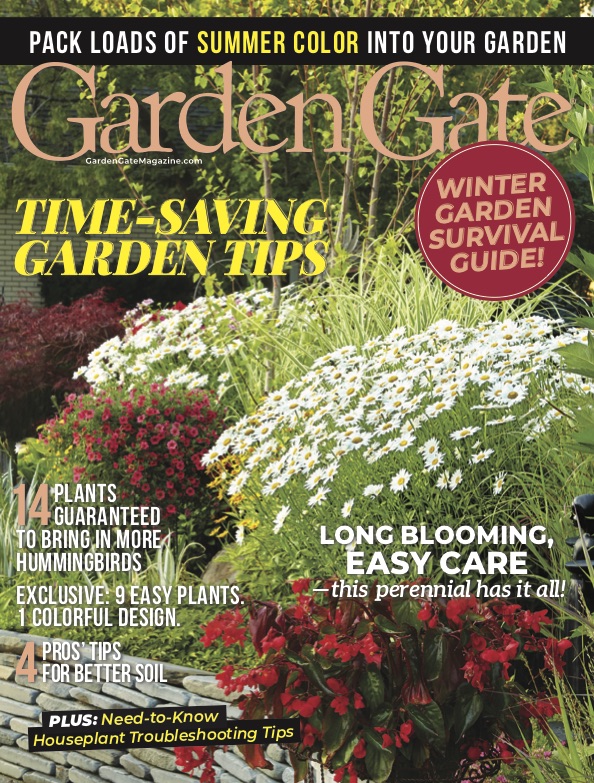
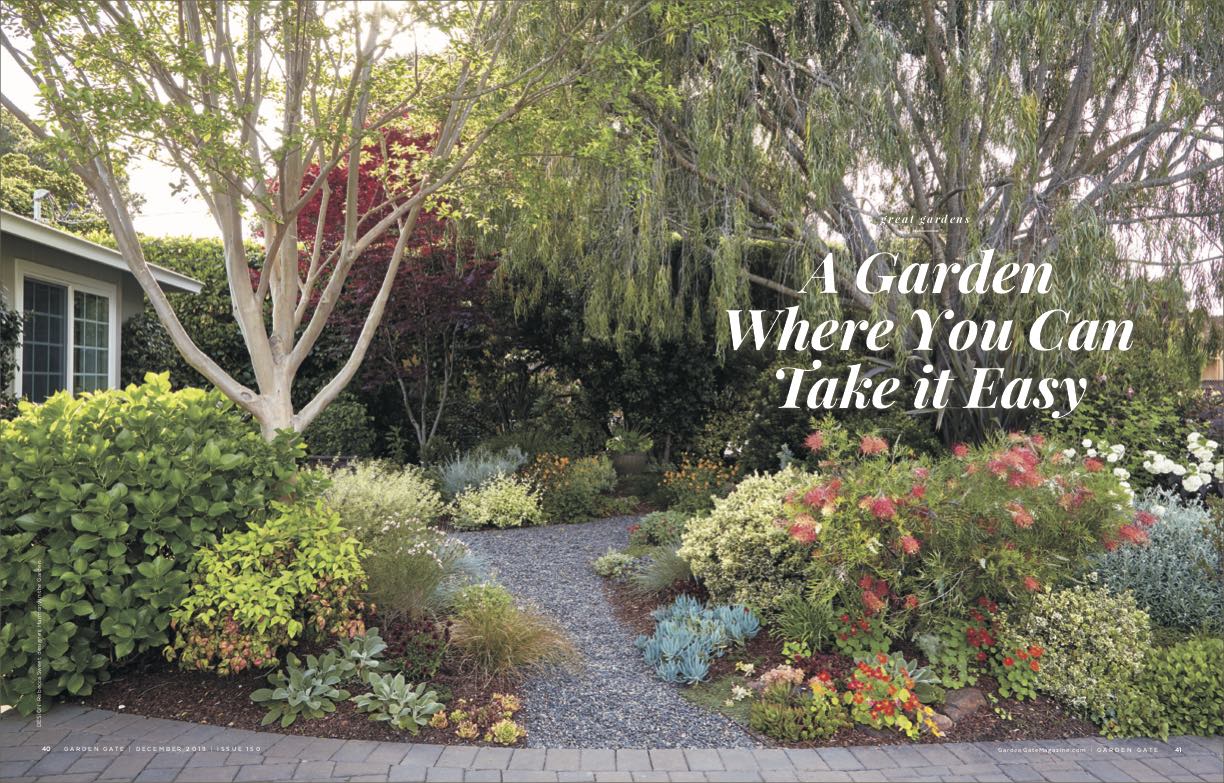






12 Comments
Oops, I forgot to add that one of my favorite look-alike combinations is to plant Daffodils behind yellow Daylilies. That arrangement also helps to hide the fading foliage of the Daffodil. Oh, and if you’d like to call me to talk more about Granite Bay, shoot me an email and give me your number. We used a wonderful realtor who I’d highly recommend. 🙂
Thanks for the tip re: hiding the foliage! On my to-do list is planting a zillion narcissus bulbs my mother gave me and I’ve been strategizing just where I’ll plant them to hide their dying foliage. 🙂
Ha ha, I’m with you on pink in the garden. And pink with yellow – ugh. Maybe at Easter. So why does it LOOK SO GOOD in your garden?!! You’ve actually convinced me I need a Sheffield Pink Chrysanthemum. So much for generalizations I guess. But with your eye for design and knowledge of plants, you can make every garden you touch look exquisite.
You’re in Granite Bay?! Somehow I missed that. We’re thinking of moving there, but the heat has me worried. Are you glad you made the move?
Nervously,
Heidi
Hi Heidi – yes, we’re in Granite Bay and I have to say we love it up here. I still go down to the Bay Area periodically to maintain and work with existing clients but have never missed the chaos there for one single moment. The heat? That’s another story. I HATE IT. I’m not a hot-weather person at all, but because we have our family home at Lake Tahoe we just hop in the car and are there in 1 1/2 hours (another reason to move closer) If I didn’t have that escape I’d have to re-think it. We looked in Oregon, too, but dang they get pretty darn hot, too. There’s always a trade-off, and for this area it’s the heat. But the spring, fall, and winters are pretty awesome (no snow here, either, so the zones are pretty darn close to the Bay Area.)
And THANK YOU so much for such lovely comments about my eye for design – you’re making me blush! Honestly, I can’t rave about this mum enough. It’s quickly turned into my favorite plant (or at least in the Top 10). It just pumps out the blooms that are so pretty because they’re not so blatantly ‘pink’. Some people have a hard time seeing the apricot shades in the petals, but it’s really evident when the blooms are tight, opening up. And the contrast of shades are spectacular. Plus, every insect in the neighborhood just goes nuts for the flowers, which is another added bonus. The blooms look really nice with soft purple (like the salvia purpurea next to one of them).
I’m glad to know that you had to order the Sheffield Pink because it isn’t out in the stores. I remember reading about it a few years ago but have not seen it. I don’t usually order plants but if I do, I’ll have to keep this in mind. Thanks for all the good plant information in this post.
You’re so welcome, Barbara. I actually order a lot of plants online because I’m such a plantaholic and can’t find the unusual varieties locally. If you decide to order these you won’t be disappointed. I go out every day and look at the different butterflies, praying mantis, beneficial insects, etc. on these mums. 🙂
I love any Salvia! I have a large clump of Pineapple sage growing under my persimmon and it’s ablaze right now! Always reliable and lovely. I grew this from seeds collected from a friend’s plant several years ago – it’s easy to grow from seed and of course root divisions or cuttings. Good to have seeds in case you do lose your plants to cold.
Seeds! I never thought of that and have always taken them from cuttings. Great idea, Ronnie. I bet your salvia-persimmon combo is absolutely stunning right now.
A friend gave me three rooted, potted clippings from her Pineapple Sage for my Coffey Park rebuilt garden. Thanks to her the humming birds are coming back. I’m enjoying watching them. With their bright, orange red flowers it’s like millions of mini, hummingbird, feeders without having to make any sugar water solution. Hurray!
After reading about your daughter’s taste for Salvia elegans, I’ve have to give the leaves a try. I’ve heard they are edible and good for beverages and fruit salads.
Thank you so much for your blog. It’s very educational and inspirational. Your books are wonderful as well.
Oh, that’s fantastic, Tami! I love your description of the salvias, like ‘millions of mini hummingbird feeders’ – I might have to steal that for one of my talks. 😉 I’ll admit, I’m not a fan of the taste of the pineapple sage leaves, but they definitely have a wonderful aroma. My daughter can eat them by the handful. She also eats rosemary straight from the plant! And thanks for your compliments – made my day. 🙂
I have one corner of sunshine in my garden and you can be sure that there is a pineapple sage in there!! I have about a 50/50 chance of it overwintering – but I am watching so I can run out and get a replacement. Glad your garden is coming into it’s own. The 3rd year will be magical.
Hi Lin, and I sure hope your little sage overwinters, too! Can you take a cutting of it to overwinter in the house? I’ve done that lots of times, but you definitely have to have a sunny spot for it to thrive inside. I can’t wait for my garden’s third birthday – counting on lots of growth this spring (come on rain, do your thing!)